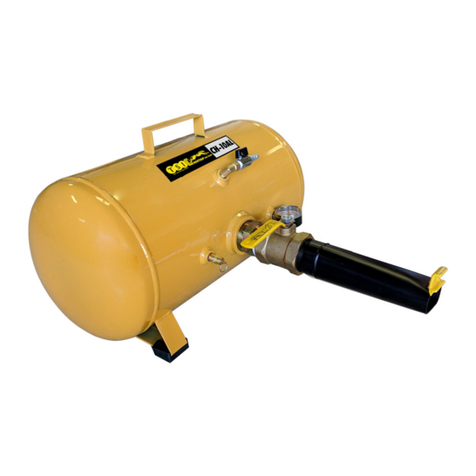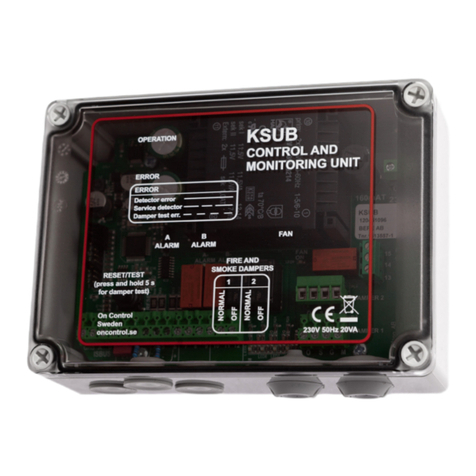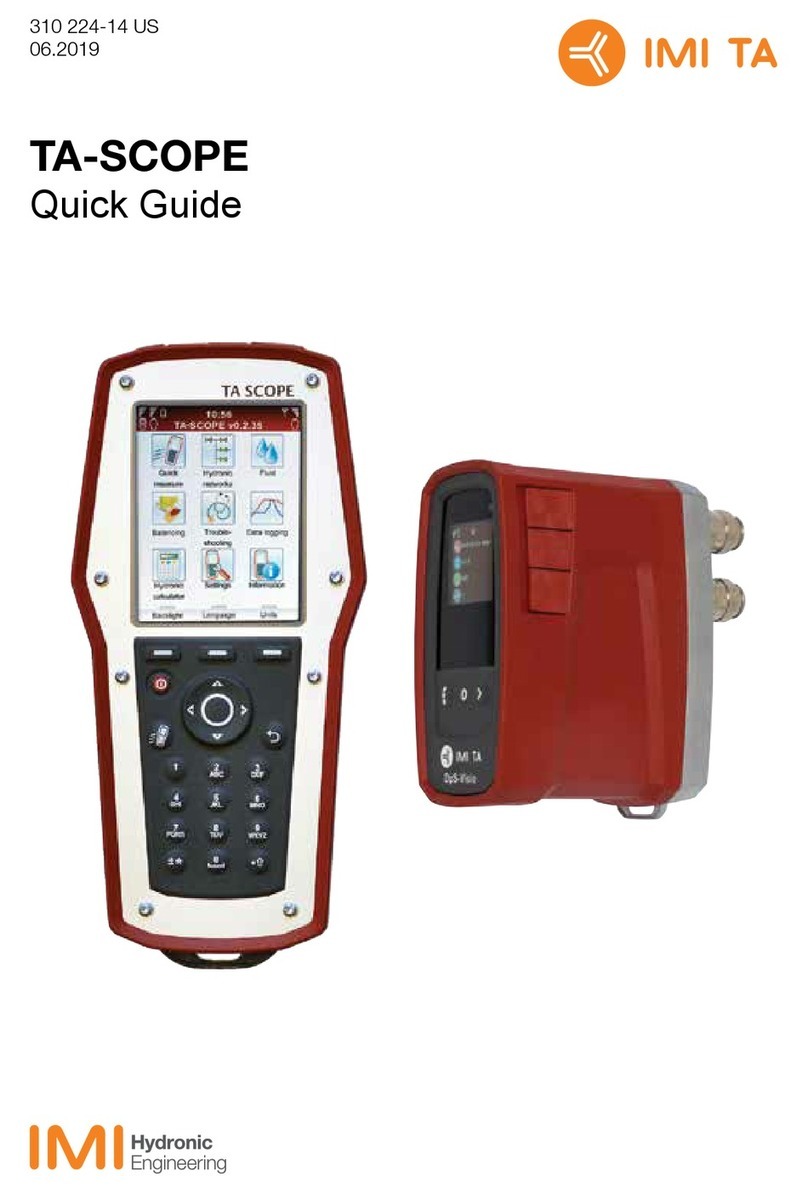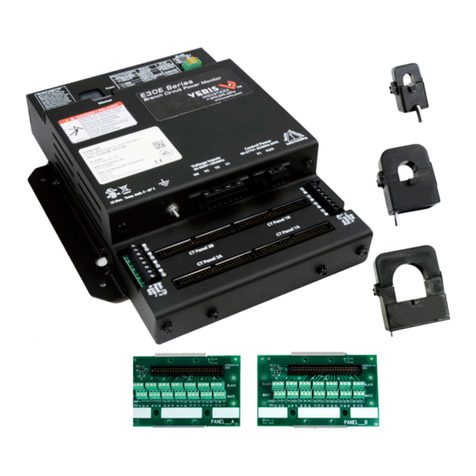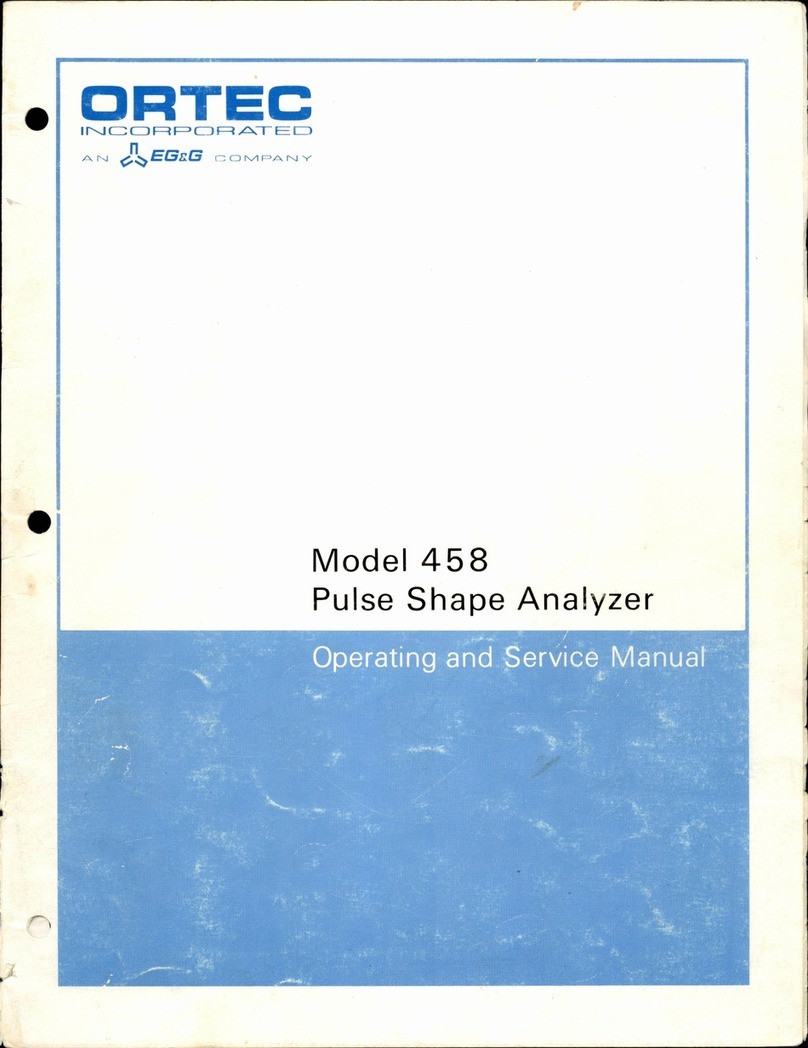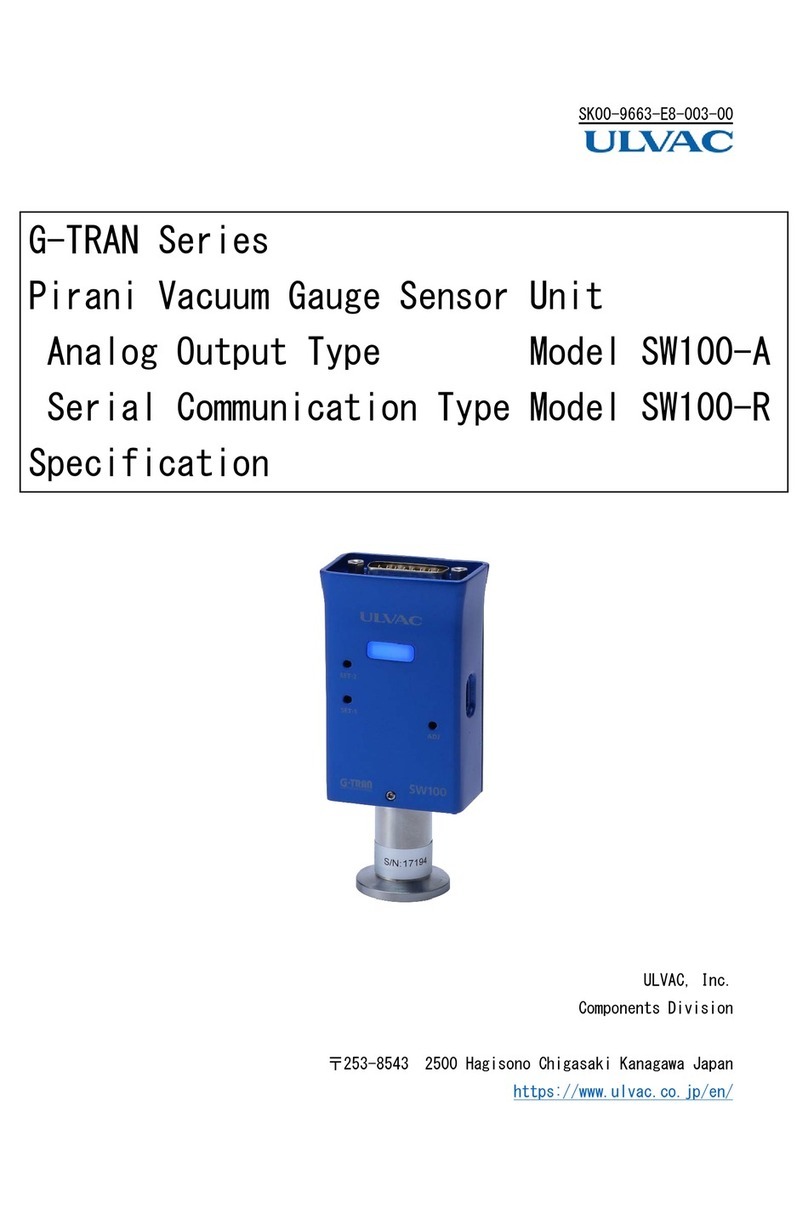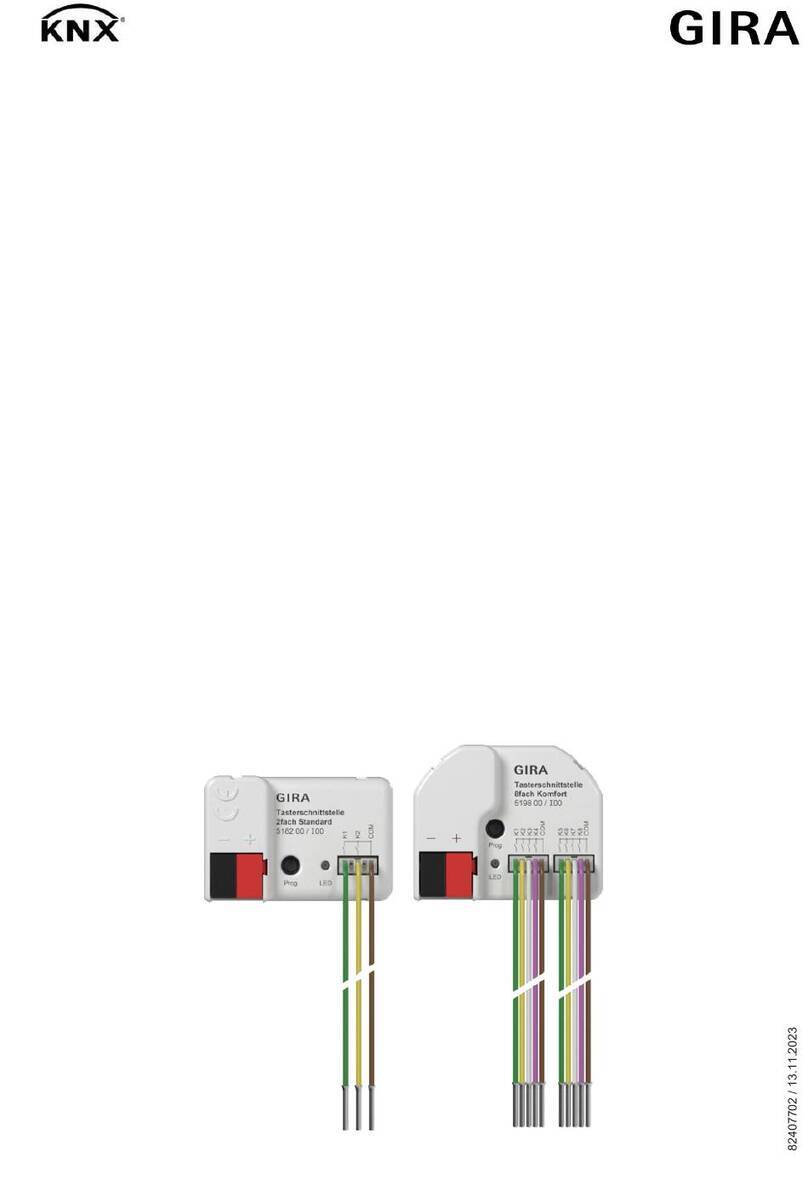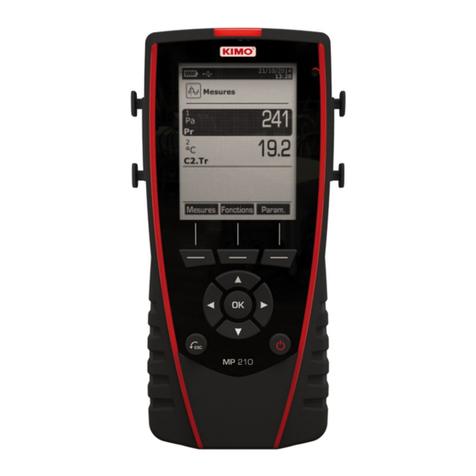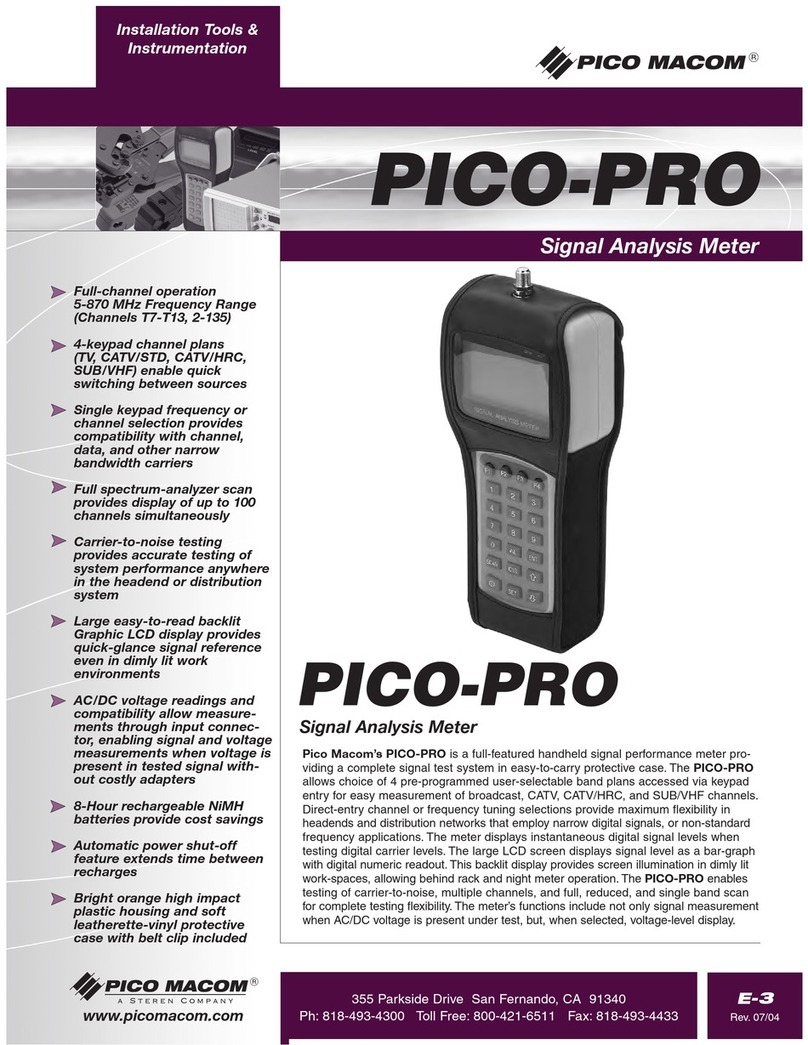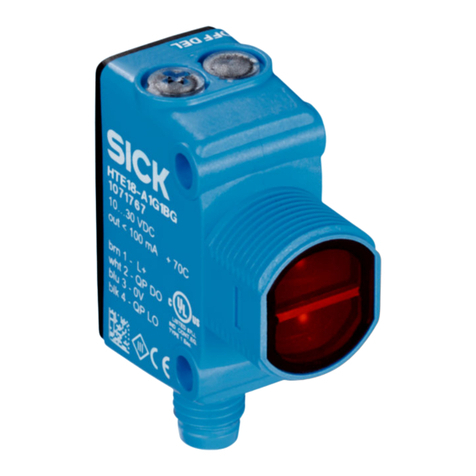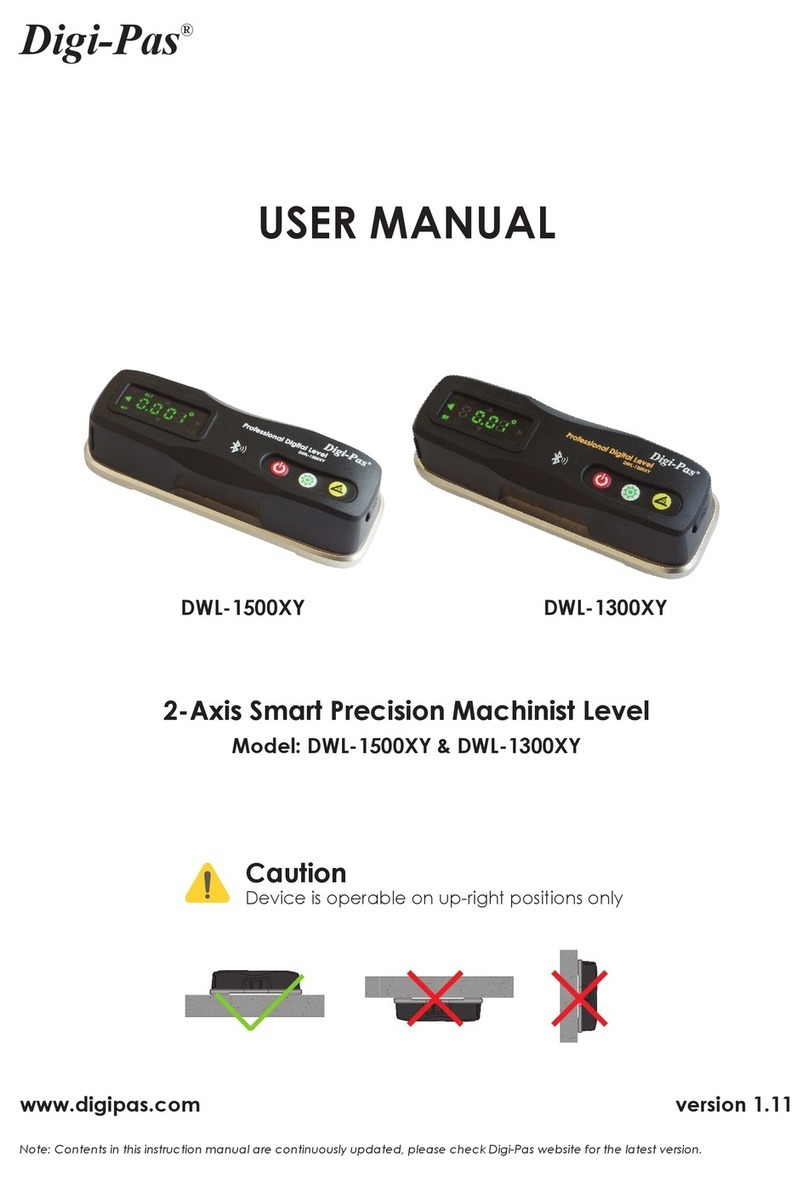Solartron Metrology BLOCK GAUGE User manual

DIGITAL BLOCK GAUGE
user leaet

Part No. 502924 Issue 5
2
1.0 Index
1.0 Index
Section Title Page
1.0 Index . . . . . . . . . . . . . . . . . . . . . . . 2
2.0 Safety Summary . . . . . . . . . . . . . . . 3
3.0 Mechanical Installation . . . . . . . . . . . 4
3.1 Tool Holder Installation/Adjustment . . 4
3.2 Spring Installation/Adjustment . . . . . . 6
3.3 Pneumatic Actuator Installation . . . . . 7
4.0 Specifications . . . . . . . . . . . . . . . . . . 8
Return of Goods
Solartron Sales Offices

Part No. 502924 Issue 5
3
2.0: Safety Summary
2.0: Safety Summary
Terms in this Handbook
WARNING statements identify conditions or
practices that could result in personal injury or
loss of life.
CAUTION statements identify conditions or
practices that could result in damage to the
equipment or other property.
Symbols in this manual
This symbol indicates where applicable
cautionary or other information is to be
found.
WARNINGS:
Do not operate in an explosive atmosphere
To avoid explosion, do not operate this equipment in
an explosive atmosphere.
Pneumatic Application
Under no circumstances should a maximum
overpressure of 7 bar be exceeded. The maximum
operational pressure for the Block Gauge is 3 bar.
Operating Pressure Range
Pneumatic Operation 1 to 3 Bar relative
To maximise working life of the probe head when
pneumatic actuation is chosen, the air supply should
be both clean and dry for continual reliable operation.
Maximum relative humidly of 60% and filtered to
better than 5 µm particle size.
NOTES:
This equipment contains no user
serviceable parts
This equipment must be returned to your original
supplier for all servicing and repair.
Low Voltage
This equipment operates at below the SELV
and is therefore outside the scope of the Low Voltage
Directive.

Part No. 502924 Issue 5
4
3.0: Mechanical Installation
3.0: Mechanical Installation
First establish the orientation in which the Block
Gauge will be used. The choice of return spring (6)
and its position depends on the orientation of the
gauge and should be made after the tool holder (7)
and contact tip (9) have been fitted. A set of return
springs (for different measurement forces)
are included with each gauge.
It may be easier to set contact tip forces as close
as possible to operating forces before the Block
Gauge is installed onto a machine or fixture. Final
adjustments may then be made after installation.
Final adjustment of the spring force is made by
winding the spring holder (5) in or out.
When fitting a pneumatic actuator (4), ensure that
the threads in the Block Gauge and the actuator are
clean. In order to avoid damage to the actuator or
the Block Gauge, it is important not to exceed the
specified air pressure.
When mounting the Block Gauge in a fixture, care
must be taken not to drop the gauge or apply
excessive shocks which may degrade performance.
CAUTION
The pneumatic Block Gauge works at a higher air
pressure than pneumatic Gauging Probes. In order
to avoid damage to Gauging Probes when used in
conjunction with Block Gauges, it is important that
separate regulators are used for each product.
It should be secured to a flat surface by using the
fixing screws at the base of the Block Gauge. The
fixing screws are M6. The thread depth in the body
is 8 mm.
Anti rotation adjustment
Return Spring (6)
Tool Holder (7) (do not exceed
tightness torque of 1.5 to 2 Nm)
Tip Carrier (8)
Sensor (1)
Pneumatic
Actuator (4)
Spring Holder (5)
Tip (9) fit to carrier first, remove
from carrier before replacing
(1)
(2)
(3)

Part No. 502924 Issue 5
5
3.0: Mechanical Installation (continued)
.3.0: Mechanical Installation
3.1: Tool Holder Installation/Adjustment
The tool holder is infinitely adjustable along the
industry standard dovetail fitting on the Block Gauge
frame. This dovetail fitting ensures that the gauge is
rigid yet easy to install and adjust.
Tool Holder Adjustment
1. Loosen the caphead screw (11) located on the
tool holder (7) using a 3 mm Allen key.
2. Slide the tool holder to the required position.
3. Tighten the screw.
CAUTION
In order to avoid damage to the linear
bearings, it is important not to exceed
the specification for the torque setting
(1.5 to 2 Nm) of the fixing screw when
adjusting the tool holder.
Tool Holder Installation
To remove the tool holder (7), loosen the caphead
screw (11) located on the tool holder using a 3 mm
Allen key. Slide the tool holder off the dovetail.
To re-install the tool holder, simply slide it over
the dovetail joint to the required position and then
tighten the caphead screw.
Caphead Screw (11)
Dovetail Fitting
Tool Holder (7)

Part No. 502924 Issue 5
6
3.0: Mechanical Installation (continued)
3.0: Mechanical Installation
3.2: Spring Installation/Adjustment
The choice of spring return and its position depends
on the orientation of the gauge and should be made
after the tool holder and contact tip have been fitted.
A set of four return springs are included with each
gauge.
1. Unscrew and remove the spring holder (5).
2. Remove the spring (6) if installed.
5
6
3. Select an appropriate spring, and insert this into
the frame.
4. Insert the screw holder back into the Block
Gauge frame and screw in.
5. Final adjustment to the spring force is made
by winding the spring holder in or out using a flat
blade screwdriver.

Part No. 502924 Issue 5
7
3.3: Pneumatic Actuator Installation
1. Unscrew and remove the spring holder (5).
2. Remove the spring (6) if it is installed.
3. Install a spring and spring holder opposite to
where the pneumatic actuator is to be installed
4. Insert the pneumatic actuator (4) and screw until
tight. Do not overtighten.
4
6
5
3.0: Mechanical Installation
3.0: Mechanical Installation (continued)
To maximise the working life of the Block Gauge, the
air supply should be both clean and dry for continual
reliable operation. The air should have a maximum
relative humidity of 60% RH and be filtered to better
than 5 µm particle size.
When fitting a pneumatic actuator, ensure that
threads in the Block Gauge and the actuator are
clean. In order to avoid damage to the actuator or
the Block Gauge, it is important not to exceed the
specification for air pressure.
CAUTION
The pneumatic Block Gauge works at
a higher air pressure than pneumatic
gauging probes. In order to avoid
damage to gauging probes when used
in conjunction with Block Gauges, it
is important that separate air pressure
regulators are used for each product
type.

Part No. 502924 Issue 5
8
4.0: Specication
4.0: Specication - See Orbit3 Catalogue
For instruction on using Orbit3 see the Orbit3 System Manual at www.solartronmetrology.com
See Data Sheet 502624 for Block Gauge Performance, all data sheets and manuals are avilable at:
www.solartronmetrology.com
Table of contents

